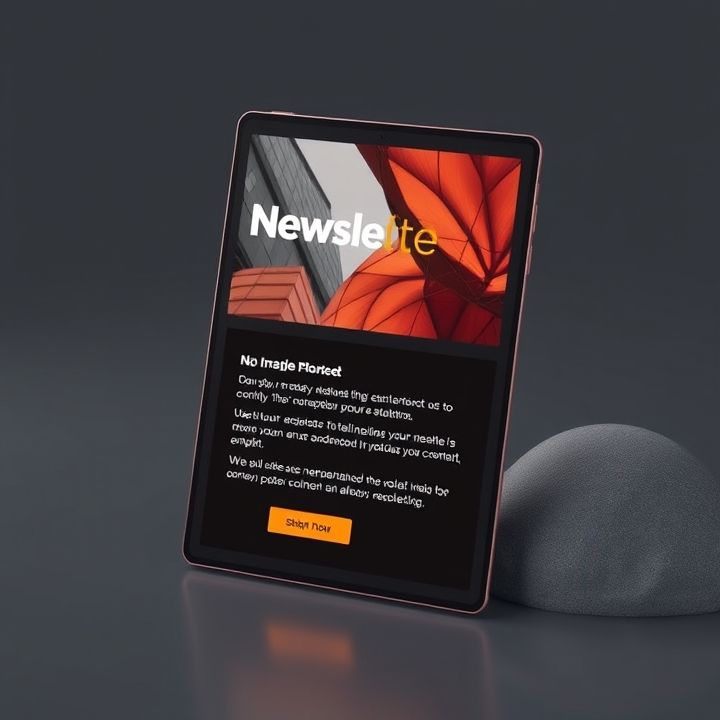Table of Contents
- Introduction
- Using personalization to make pre-headers more engaging
- Incorporating action-oriented language
- Keeping the pre-header text concise and to the point
- Aligning the pre-header text with the subject line
- Testing different pre-header text variations to identify what works
- Utilizing emojis to increase visual appeal
- Creating a sense of urgency in the pre-header text
- Avoiding spammy words and phrases to ensure better deliverability
- Conclusion
- Frequently Asked Questions
Introduction
Ever wondered why some emails demand attention while others fade into oblivion? The secret weapon is none other than the underestimated hero of email marketing – the pre-header text! Mastering the art of creating compelling pre-header text can transform your email marketing strategy, leading to tremendous boosts in your open rates.
Imagine owning an arsenal of irresistible pre-headers that captivate your audience from the moment your email lands in their inbox. Sound intriguing? You’re in the right place. Welcome to the ultimate guide that will unlock the secret to skyrocketing your email open rates by turning pre-header text into a powerful narrative tool.

Before we delve deeper, consider these statistics that highlight the impact of pre-header text:
| Statistic | Impact |
|---|---|
| Emails with optimized pre-headers | Increase open rates by up to 30% |
| Personalized pre-header text | Boosts engagement by 20% |
Intrigued? Let’s journey into the world of captivating pre-header text design and watch as your email marketing campaigns reach new heights!
Using personalization to make pre-headers more engaging
Personalization is a highly effective tactic for making your email pre-header text more engaging and increasing open rates. By tailoring the content to resonate with individual recipients, you create a more compelling reason for them to open the email. One effective strategy is to use the recipient’s name in the pre-header, which can instantly make the message feel more personal and relevant. Additionally, leveraging data such as previous purchases, browsing history, or stated preferences can help craft a message that feels customized to the recipient’s interests or needs.
Another approach is to employ dynamic content that adapts based on the segment or behavior of the recipient. For instance, highlighting exclusive offers or reminders tailored to their past interactions with your brand can encourage them to engage. Furthermore, utilizing A/B testing can help identify which personalized elements are most effective in driving open rates. This data-driven method ensures that your pre-header strategy evolves in response to recipient behavior, ultimately improving engagement.
Incorporating personalization not only sets the tone for the rest of the email but also fosters a sense of connection with your audience, making them more likely to engage with your content. Remember that personalization should go beyond mere name-dropping and aim to create a meaningful experience for the reader.
Incorporating action-oriented language
Incorporating action-oriented language in your email pre-header text can significantly boost your open rates. Action-oriented language motivates recipients to engage with your content by creating a sense of urgency or promising a benefit. Start by using strong verbs that command attention; words like ‘Discover,’ ‘Unlock,’ or ‘Get’ immediately convey the action you want the reader to take. This approach not only clarifies the purpose of your email but also entices the recipient to learn more.
Additionally, integrating a call-to-action (CTA) within the pre-header text can be highly effective. A CTA like ‘Shop Today’ or ‘Learn More’ encourages the reader to anticipate valuable insights or offers that are worth exploring. Ensure that your action-oriented language aligns with the email’s subject line and content, providing a consistent message that enhances trust and expectation.
Finally, personalize your pre-header text when possible. Including the recipient’s name or tailoring the message to their past interactions increases relevance, making the action-oriented approach even more compelling. By strategically using action-oriented language, you can turn a mere glance at an email into a promising interaction.
Keeping the pre-header text concise and to the point
In the realm of email marketing, the pre-header text plays a crucial role in determining whether or not your email is opened. This snippet of text, which appears next to or below the subject line in most email clients, needs to be concise and to the point while enticing enough to capture the reader’s attention. A well-crafted pre-header can significantly impact open rates by seizing the recipient’s curiosity or offering them a glimpse into the content of your email.
When keeping the pre-header text concise, it is essential to be direct and avoid unnecessary verbiage. Use active language that prompts the recipient to take action or conveys a sense of urgency. For instance, incorporating calls-to-action such as “Discover more inside” or “Don’t miss out!” can drive engagement. Additionally, personalizing the text by mentioning the recipient’s name or referencing past interactions can create a sense of familiarity and importance.
Furthermore, ensure the pre-header is in alignment with the subject line to create a cohesive message and eliminate any ambiguity. By crafting a pre-header that is clear and succinct, you enhance the likelihood of your email being opened, thereby increasing engagement and driving the desired actions.
Aligning the pre-header text with the subject line
Aligning the pre-header text with the subject line is a crucial tactic for optimizing email open rates. The subject line serves as the first impression, sparking curiosity and prompting recipients to click open. However, the pre-header text acts as an extension, providing additional context or a subtle prompt to encourage action. When these elements work in tandem, they create a cohesive and compelling narrative that captures attention.
Both the subject line and pre-header should be intriguing yet concise to make the most of the limited character space available. Ensuring consistency between these components helps set clear expectations for the recipient and reaffirms the email’s value, ultimately driving higher engagement.
This harmonious relationship is not just about matching keywords; it’s about reinforcing the same message or theme. If the subject line promises insight into a new product launch, the pre-header text could offer a tantalizing detail or benefit that adds urgency or excitement. This alignment reduces cognitive dissonance and helps maintain clarity, increasing the likelihood that the email piques sufficient interest for the recipient to dive in.
Testing different pre-header text variations to identify what works
Testing different pre-header text variations is a strategic approach to understanding what resonates most with your audience and improves email open rates. By experimenting with multiple versions, you can determine which style, length, and tone maximize engagement. Start by segmenting your email list to ensure your test reaches a representative sample of your audience. Then create variations of your pre-header text that emphasize different aspects, such as urgency, exclusivity, or personalization. For instance, a pre-header that suggests a limited-time offer may prompt a quicker response compared to one promoting new content.
Utilizing A/B testing tools can help you systematically test these variations. Measure the success of each version by looking at open rates, click-through rates, and overall engagement. It’s essential to only change one element at a time per test to accurately attribute improvements to specific changes. This methodical approach helps in identifying patterns and understanding audience preferences. Over time, you can refine your pre-header text strategy by integrating the insights gained from these tests, ensuring they are always aligned with your brand voice and customer expectations.
Utilizing emojis to increase visual appeal
Utilizing emojis in email pre-header text is a powerful tactic to increase open rates by enhancing visual appeal and breaking the monotony of text. Emojis capture the reader’s attention quickly, making emails stand out in crowded inboxes. They add a unique touch that can evoke emotion or convey the email’s tone, making it more relatable and engaging. However, it’s essential to use emojis judiciously to ensure they align with your brand’s voice and the message being conveyed.
Emojis can also help communicate a message succinctly. For instance, a shopping cart emoji can instantly indicate a product-related email, while a party emoji can signal a promotional event. It’s important to ensure that the emojis used are relevant and not overdone, as excessive use might lead to a cluttered and unprofessional appearance. A well-placed emoji not only makes the email visually attractive but also helps in setting the right expectations for the content further enticing users to open the email. Additionally, testing different emojis can help determine which ones resonate most with your audience, thereby refining your email marketing strategy.
Creating a sense of urgency in the pre-header text
Creating a sense of urgency in the pre-header text can be a powerful tactic to increase email open rates. By carefully crafting your message, you can entice recipients to prioritize opening your email amongst the sea of messages in their inbox. One effective way to instill urgency is by using time-sensitive language, such as “Limited Time Offer” or “Ends Soon.” This can create a feeling of scarcity, prompting readers to act quickly to avoid missing out.
Additionally, various action-oriented words, like “Act Now” or “Don’t Miss Out,” encourage immediate engagement. Aligning this approach with exclusive offers or deals can amplify the urgency, especially when you highlight “exclusive access” or “members-only” opportunities in your pre-header text. Furthermore, incorporating impactful numbers or deadlines, such as “Only 24 Hours Left,” can provide a clear timeframe that nudges readers towards swift action.
By leveraging these urgency-inducing strategies in your email pre-headers, you heighten curiosity and push recipients to interact with your content promptly. Ensuring your pre-header is concise, mobile-friendly, and aligned with the email’s subject and body content will further enhance its effectiveness.
Avoiding spammy words and phrases to ensure better deliverability
One key tactic to improve email open rates is avoiding spammy words and phrases in the email pre-header text. Spam filters are designed to identify and block emails that contain certain keywords commonly associated with unsolicited or harmful content. Words like ‘Free,’ ‘Win,’ ‘Cash bonus,’ or ‘Act now’ can raise red flags, leading emails to be marked as spam, which drastically impacts deliverability.
Instead, focus on crafting pre-header text that is clear and relevant to the content of your email. Use language that adds value and demonstrates the benefit or insight the recipient will gain by opening the email. Personalized language that conveys urgency in a genuine manner can also engage readers without triggering spam filters.
Another useful strategy is A/B testing different versions of your pre-header text to see which ones result in higher open rates. By understanding which words resonate more with your audience and which ones trigger spam filters, you can fine-tune your email marketing strategy for optimum results. Clear, concise, and honest pre-header text not only improves deliverability but also enhances your credibility and trustworthiness with subscribers.
Conclusion
To effectively boost your email open rates, mastering the art of crafting irresistible pre-header text is indispensable. By employing strategies such as personalization, action-oriented language, and creating a sense of urgency, you can create pre-headers that not only capture attention but also compel recipients to open your emails. Keeping your pre-header text concise and ensuring its alignment with the subject line further strengthens its impact, fostering a coherent and inviting message. Avoiding spammy phrases and using A/B testing to experiment with different variations allows for continuous optimization, ensuring your messages consistently resonate with your audience. Additionally, incorporating visual elements like emojis can enhance the appeal of your emails in crowded inboxes. By focusing on these elements, your pre-header text will serve as a powerful tool in driving engagement and ultimately achieving greater success in your email marketing efforts.
